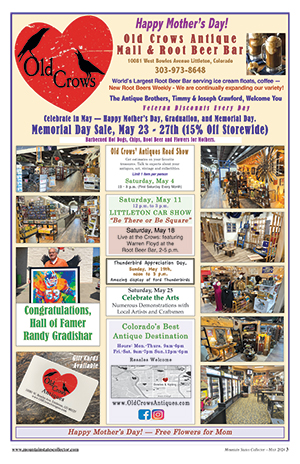 By Barry Krause
By Barry Krause If the hurricane season has ever seriously damaged your family or property, you may not be in a mood to “collect” any hurricane memorabilia, preferring not to be constantly reminded of your personal loss with such artifacts sitting around forever.
However, a fascinating range of objects can be collected and studied as hurricane-themed collectibles, not because we approve of disasters in nature, any more than we admire warfare by collecting war souvenirs, but because hurricane items are important historical and scientific evidence of what happened when these storms affected communities, and so that we might be better prepared to withstand the assaults of future hurricanes.
For example, recent newspapers and magazines give us a contemporary eyewitness account of what took place before, during and after the latest hurricane storms to hit the southeastern United states and elsewhere. These periodicals are of permanent reference value in preserving the story of these hurricanes. Many people are saving them right now. other paper memorabilia, such as evacuation notices, official and unofficial telegrams about the storm dangers, personal correspondence from hurricane sites, photographs, gasoline rationing coupons (if any), paper advertising brochures of local business firms selling hurricane protection provisions and offering to do after-storm building repairs, and maps of hurricane forecasts are collectibles that explain the hurricane’s impact on a community.
Hurricane warning flags and banners, search-and-rescue equipment actually used successfully to save potential victims, do-it-yourself building reinforcement kits and first aid supplies, and local law enforcement artifacts such as “do not cross” tape from disaster zones are ideal memorabilia for the serious collector and student of a community’s efforts to survive a hurricane. A museum exhibit could be set up with such treasures, properly displayed and explained for all to ponder.
The U.S. National Weather Service has free maps for downloading on its Internet site, giving hour-by-hour forecasts of the projected paths of specific hurricanes affecting America’s coasts and inland. The one illustrated here shows Hurricane Ivan as it existed at 11:00 A.M. on September 10, 2004, just southeast of Jamaica, with a possible path to Florida’s we5t coast several days in the future.
Ivan, you may recall, did strike Jamaica the next day, with sea waves two-stories high, winds over 100 miles an hour, and extensive property damage, plus a number of residents killed and injured. Ivan then traveled to attack the United States, with continuing destruction.
Hurricanes are tropical storms that form on the ocean’s surface, near, but not exactly on, the equator, and they then travel until they lose their energy and dissipate.
Hurricanes do damage with strong winds at least 74 miles an hour, heavy rains, as well as wave destruction along coastal areas.
In the early 20th century, there were no space satellites or radar warnings of approaching hurricanes, so there was often greater loss of life because people couldn’t evacuate to safety in time. For example, about 6,000 people were killed in the Galveston, Texas region by a hurricane in 1900, and picture postcards of its destruction are still avidly sought by collectors of hurricane memorabilia.
Hurricanes have wrecked havoc in some foreign countries in modern times. Over a quarter million people drowned in a storm surge from a tropical cyclone in East Pakistan (later called Bangladesh) in 1970, and floods from Typhoon Nina killed over 100,000 people in China in 1975.
Hurricanes used to be named only for women, but, in the late 1970s, male names have also been given to specific hurricanes each season. Many people in the Bahamas, Florida and Louisiana were affected by Hurricane Andrew in 1992 which killed 54 people and caused about $22 billion in damage.
Survivors of Andrew collect artifacts and memories of it. Entire books have been written about specific hurricanes in history, and an interesting collection of non-fiction and fictional hurricane-themed literature might be assembled by the collector at modest cost, and even read for pleasure and profit.
“Hurricane survival manuals” are specialized books. Of greater drama would be any genuine items that were actually hit by a hurricane, such as strong metallic objects twisted out of shape by the force of the wind, pieces of buildings that exploded in tornadoes spawned by hurricane storms, and objects that saved a life when a person was hiding behind them for protection. These items might be better donated and exhibited in a local museum if the collector lacks space for storing them at home.

















Follow Us